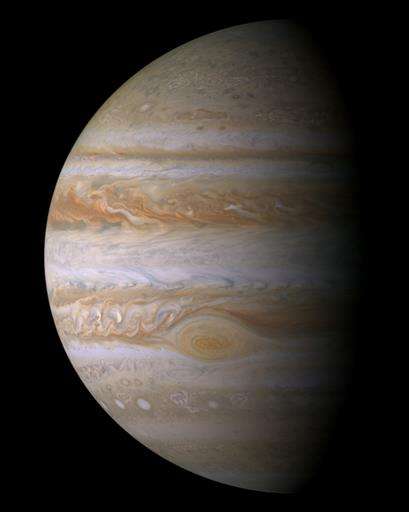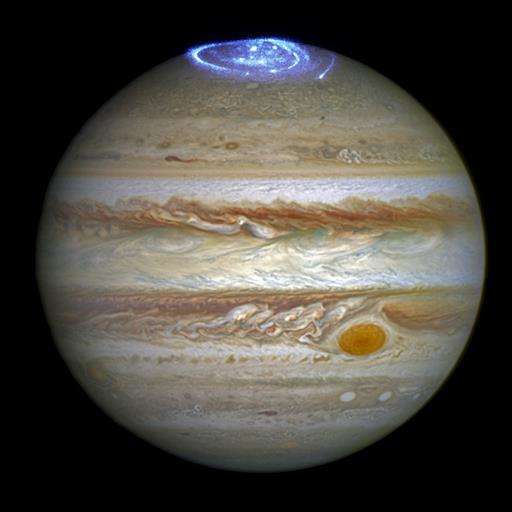Unsolved mysteries about the solar system's biggest planet

Swirling storms. Dusty rings. Glowing polar lights.
Glimpses of Jupiter have been beamed back by robotic explorers since the 1970s. Most visits were brief and only one spacecraft spent time circling the planet. So there's still lots to learn about the biggest planet in the solar system and its four main moons.
NASA is headed to Jupiter again for what's promised to be the best views and most extensive exploration yet. Named for the king of the Roman gods, Jupiter is one of five planets visible with the naked eye. It's so massive that it could hold everything else in the solar system, minus the sun.
The Juno spacecraft, named after the Roman goddess who was Jupiter's wife, arrives Monday after a nearly five-year voyage. It will orbit the planet for over a year.
A look at what's still unknown about Jupiter:
WATER
Like the sun, Jupiter is a ball of mostly hydrogen and helium. It was probably the first planet to form. Jupiter is 11 times wider than Earth and 300 times heavier. Juno will hunt for water in Jupiter's atmosphere, which may help explain how Earth got its water. Previous spacecraft found only a trace amount in Jupiter's atmosphere, but scientists think they didn't look deep enough. Juno carries an instrument that can pierce through thick clouds to measure the water content.
GREAT RED SPOT
A world of swirling clouds and colorful stripes, Jupiter's most prominent feature is the Great Red Spot, a fierce storm in the atmosphere larger than Earth that has lasted for centuries. In recent years, the spot has been mysteriously shrinking. Once an oval about 25,500 miles wide (41,036 kilometers) in the late 1880s, the spot shrank to its smallest observed size in 2014—the shape of a circle about 10,250 miles across (16,495 kilometers). Juno will study how deep into the atmosphere the Great Red Spot extends in an effort to understand what may happen next to Jupiter's trademark.

AURORAS
Earth's dazzling southern and northern lights are dim compared to Jupiter's auroras, the brightest in the solar system. Earth's polar lights are triggered by solar storms, which occur when a cloud of gas from the sun slams into the planet's magnetic field. Jupiter's powerful auroras are sparked by the planet's own rotation. Jupiter is the fastest-spinning planet in the solar system, taking just 10 hours to complete a rotation. As Jupiter spins, it drags its magnetic field around with it. Juno will observe the light show and learn about the driving forces behind it.
POLAR REGIONS
The first peek of Jupiter's poles came in 1974 when Pioneer 11 flew by en route to Saturn. Juno will get a more detailed look by passing over Jupiter's polar regions. During the next year, the spacecraft will circle Jupiter 37 times from pole to pole—a path that will cover the whole planet. At its closest approach, Juno will skim within 3,100 miles (5,000 kilometers) of Jupiter's cloud tops.
More information: Mission: tinyurl.com/jupitermission
© 2016 The Associated Press. All rights reserved.




















